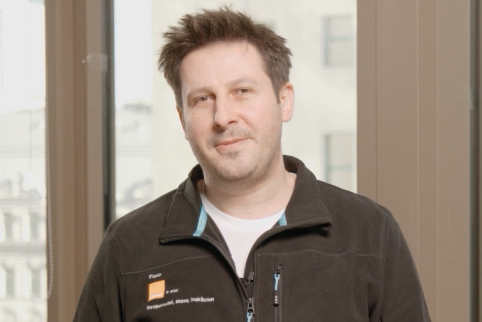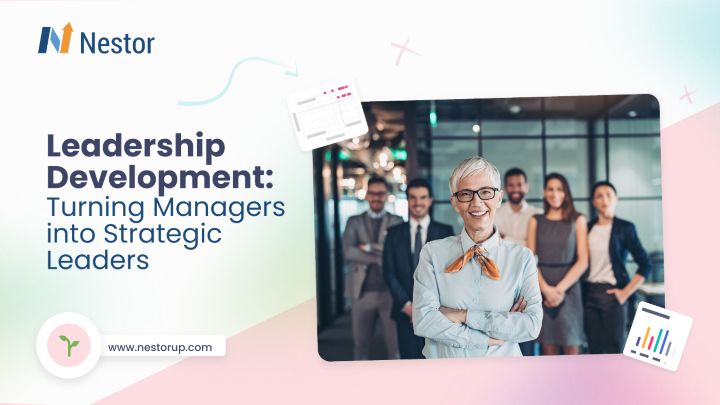
The concept of a static and stable skill set has quickly become obsolete. In the new dynamic business environment, where everyone tries to keep up with the latest tech novelties, employees and employers alike need to adapt and evolve. And this is where continuous learning and skill development come in.
Shifting to a culture where learning becomes a continuous process will not only drive the development of in-demand skills and expertise, but will also help companies and their workforce become more competitive, agile, and better equipped overall to face the challenges of tomorrow.
Let’s explore the powerful relationship between skill development and continuous learning and why your organization should pay close attention to these approaches.
What is continuous learning?
Continuous learning is the ongoing expansion of knowledge and skills, which goes beyond the scope of traditional education and has a transformative impact on the personal and professional lives of people.
Continuous learning is, at its core, a mindset or approach to life. It relies on curiosity and a constant desire to self-improve and remain relevant in various circumstances. Either at work or in day-to-day life, this mindset can manifest in the form of various activities, including:
- taking online tutorials and courses
- engaging in self-paced study (reading, research)
- receiving personal coaching or mentorship
- attending workshops and conferences
- networking and learning from like-minded people
- getting involved in community or volunteer activities
- participating in cross-functional teams
- on-the-job learning
The list is not exhaustive by any means, and that’s the beauty of continuous learning — it’s flexible and can happen in different contexts and various forms.
Lifelong learning or ongoing learning are other names you’ll see used when referring to this approach.
How employees benefit from a continuous learning culture
To highlight the importance of lifelong learning in the current world of work, let’s start by looking at the advantages for your workforce:
- Career success: Ongoing improvement and career advancement are strongly correlated. Employees who are more eager and proactive when it comes to gaining or expanding their abilities will not only receive more challenging and rewarding work but will also be in the position to make (vertical or lateral) moves that fulfill their career aspirations.
- Relevancy and job security: Constantly improving and expanding their skill set serves well all employees, but especially those in industries where technological disruptions or market shifts are changing the nature of job roles or even making some positions obsolete. Being willing and capable of acquiring new skills is the only way to remain relevant and provide value.
- Increased confidence and satisfaction: As workers reach higher proficiency levels and rely on a strong set of skills, they will approach daily tasks more confidently, resulting in better overall performance and fewer human errors.
- Improved adaptability: Being adaptable goes hand in hand with the lateral moves we’ve mentioned earlier and redeployment initiatives. Continuous learning is critical for workers who want to be better positioned for this type of opportunity or business need. Soft skills, in particular, stand out here due to their high transferability and in-demand status.
How organizations benefit from a continuous learning culture
What about decision-makers, stakeholders, and organizations? How does continuous learning benefit them?
- Higher productivity rates: Continuous learning improves productivity in two ways. On one hand, it helps nurture competent and skillful employees, who are more efficient and impactful. On the other hand, it empowers the same employees to reach a higher problem-solving and critical thinking proficiency, enabling them to focus on more complex and important tasks.
- Better talent engagement and retention: Growth and learning are among the most in-demand expectations employees have from employers in the current workplace. This is especially true for Gen Z and future generations. By offering them a wide range of transparent development opportunities, organizations will enjoy longer tenures and more involvement from their people, avoiding challenges like “quiet quitting“.
- Long-term stability and sustainability: In the current and future business environment, companies (will) need to find faster and more creative ways to adapt to new technologies or unexpected changes in market or customer demands. While continuous learning cannot help predict these developments, it will help attract and bring together a workforce that’s ready to answer quickly and flexibly in any situation. Continuous learning is also one of the defining characteristics of a future-ready workforce.
- Faster innovation: A culture of continuous learning is also a culture where experimenting and taking risks are encouraged. By creating a space where people feel safe to try out new ideas or concepts, organizations will stimulate creativity and innovation, becoming more competitive in the process.
- Critical growth for managers and supervisors: Ongoing learning isn’t limited to regular employees and should be adopted by managers and team leaders as well. In fact, they should be shining examples. However, another positive (unintended) effect is that teaching others is often the best way to learn or deepen your understanding of various concepts — and people in managerial or leadership positions will greatly benefit from that.
- Successful learning programs: When lifelong learning becomes an integral part of the company culture itself, it can set the stage for more relevant and targeted growth initiatives. This will not only result in better learning outcomes but will also ensure that talent development remains aligned with (changing) business needs.
- Highly supportive work environment: Together with business owners, senior leaders, and direct managers, HR and L&D departments play a crucial role in nurturing a culture of continuous learning. By focusing on the individual growth of each employee and helping them develop at their own pace, these departments will create a more positive and harmonious work environment, where learning, rewards, and gratitude are key values.
L&D innovators are focusing on the convergence of talent development, skill-based planning, and internal mobility to build a work culture based on continuous learning.
— LinkedIn Workplace Learning Report
How to build a culture of continuous learning
Having taken a look at the benefits of adopting ongoing learning in the workplace, it’s time to look at the most effective ways of creating and maintaining this type of culture at the organizational level:
Connect personal development to company goals
Before you start reshaping or adjusting your existing culture, it’s important to align the personal development of your employees with the short- and long-term goals of your organization.
Failing to do so will result in less effective L&D programs — or, in other words, people will either develop skills that aren’t relevant (or have a short life) or will not reach the expected proficiency levels for the most in-demand or desirable skills.
Promote and make learning a habit
Nurturing a culture of continuous learning starts with embracing the fundamental driving forces behind this mindset: curiosity, experimentation, collaboration, recognition, and so on.
Leadership needs to set an example by demonstrating a real commitment to these values, which should reflect everywhere, from their plans and actions to their feedback and decision-making.
Just as important is the ability to create an overall environment where safety and job security are the norm. Find ways to praise people even when experimentation fails to deliver the expected results and publicly praise progress, especially when achieved through trial and error. These efforts will instill confidence in your workforce and help them shift from a fixed to a growth mindset faster.
Ensure that all learning and development opportunities are easily accessible
Having a plethora of L&D opportunities isn’t enough to drive ongoing learning. In the first place, employees need to be aware of them and further on, to have a quick and easy way to access them — especially in the hybrid and remote workplace.
Various technologies and platforms can facilitate this access and centralize all development opportunities into one single place. Internal talent marketplaces, for example, will serve you great in that direction and also come with the advantage of using data insights and algorithms to accurately match employee skills and interests with the best-fit development and learning opportunities.
Learn more about Nestor’s skills-based talent marketplace.
Offer personalized experiences for learning
Continuing the point we’ve stated above, technology once again comes to the rescue. The truth is defining, assessing, and tracking employee skills is challenging. In fact, it’s one of the biggest roadblocks associated with modern skills management processes.
In Nestor, for example, each employee has a unique skills profile, where all acquired, required, and desired skills are displayed. Based on the evaluated skills that are required for the job role, HR Managers and people leaders can spot gaps.
These gaps will be the starting point for initiating individual growth plans and personalized initiatives meant to help each employee enhance their unique potential and focus on the specific areas that need improvement.
Focus on upskilling your managers
Focusing on upskilling managers is crucial as they play a pivotal role in driving organizational success. By enhancing their skills and knowledge, managers can better lead and inspire their teams, adapt to evolving business landscapes, and make informed decisions that contribute to improved productivity and employee satisfaction.
Upskilling managers is also about helping them move away from the traditional managerial role and mindset to a more modern, coaching style of leadership. With this mindset, managers can act as mentors and ardent supporters of their employees, helping and encouraging them to progress in their careers in a way that aligns personal expectations with business goals. And that’s what continuous learning is all about.
Leadership development surveys are a great way to assess and identify leadership strengths and areas that need to be addressed.
Listen to feedback from employees
One of the best ways to foster and maintain a culture of continuous learning is to (actively) listen to what employees have to say since they are the target group of all development strategies and actions.
Thanks to their feedback, HR and L&D departments can identify existing learning gaps and adapt training programs that fail to deliver the expected results. Insights from employee feedback are also the best place to start when addressing the challenges associated with learning initiatives.
Engaging in this process will also show your employees that their opinions matter, that they are heard, and that the entire scope of development plans is to help them perform better and advance in their careers.
It also shows that the company itself, together with key leadership, recognizes that learning is an ongoing and collective effort, which benefits massively from open communication and mutual trust.
Final thoughts
When embedded and supported by a culture of continuous learning, skill development can become a flexible and powerful journey, which has the potential to transform not only your workforce but the entire organization.
It all starts with nurturing an environment where curiosity, experimentation, and learning are valued and celebrated, and employees are encouraged to develop their skill set in a way that aligns with individual and organizational needs.
As skills-based approaches redefine the processes of modern organizations, continuous learning, and employee development will become cornerstones for business stability, adaptability, and long-term success.








